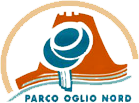Channels
Numerous “rogge”, or irrigation channels, flow into the Oglio, both on the side in the province of Brescia and that of Bergamo. In Brescia the term “seriola” is used in local dialect instead of the “roggia”, although people usually refer to them by name, so for example, the seriola Fusia is simply known as the Fusia, or the seriola Castrina, as the Castrina. These waterways do not run in a straight line, as often happens with the intervention of man, but meander and become deeper where the plain levels out, preserving surrounding woodlands. This is why man has exploited stretches of them to create artificial channels.
The Roggia Fusia originates at Paratico, where it once supplied a mill, and quickly reaches Capriolo where it supplied the historic cotton mill, Niggeler and Kupfer. It then continues on towards Castelli Calepio; here it was also vital to production at the now disused Ferrari cotton mill, at one time providing work for hundreds of people.
Cathedral-like sheet metal structures, now worn and empty, stand on the banks of the river yet they do not jar with it, rather they recall the golden age of Brescia’s industries and its economic boom. Like the Tagliuno paper mills, the Saccogna cotton mill in Pontoglio, the Rizzini silk mill and the hydroelectric plant in Genivolta, the Meroni silk mill in Soncino and the Mambroni mill in Quinzano d/O. From Palazzolo s/O to Urago d/O the course of the river intertwines with the Castrina and Trenzana channels, punctuated by the former Marzoli dam, a huge hydraulic structure that took its name from the Marzoli family. Each town that we encounter along the “river’s green path” corresponds to a channel that provided water to the surrounding fields and to help man in his labours, or the outlet of a larger canal, like the Naviglio di Cremona, flowing from Calcio – Urago d/O or the Naviglio Grande Pallavicino originating near Pumenengo.
The Mulino, or mill, at Sarnico, the Mulino da Basso at Cividate al Piano, the Mulino di Basso at Torre Pallavicina, the Sant’Angelo and San Giuseppe mills in Soncino, the Villavetere mill in Gallignano (a suburb of Soncino), the Mulino della Motella at Borgo San Giacomo, the Monticelli mill at Verolavecchia and the Maglio at Pontevico, the mill at Alfiano (suburb of Corte de Cortesi) were supplied with water by the irrigation channels in the area.
The Roggia Savarona is perhaps the largest channel on the side that falls within the province of Brescia. Together with smaller channels, Roggia Fratta, Scolo Gambino, Roggia Oriolo, Roggia Gambarone, Roggia Gaspara at Borgo San Giacomo, it marks the territory of the lower park. The Roggia Savarona flows into the River Oglio at Quinzano d/O where the “Chiavicone” stands, an important artefact of hydraulic engineering that regulates the flow of the water into an artificial canal that supplied a textile mill, a mill and a sawmill. The installation has 6 manually operated sluices. It required the presence of a custodian or operator who lived in the house next to it and in the event of heavy rainfall had to check the level of the water.
 MENU
MENU



